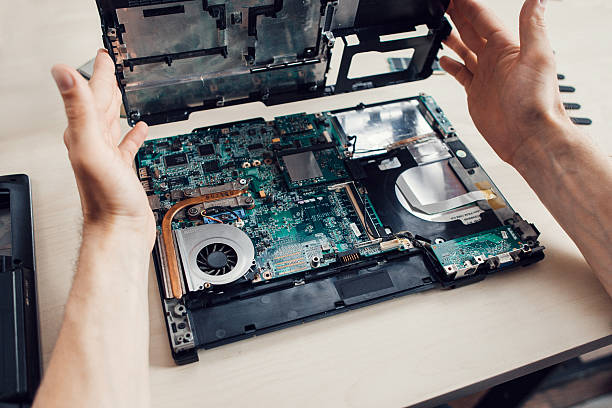Introduction:
In this comprehensive guide, we aim to assist you in your quest to find the best motherboard price that aligns perfectly with your needs. Whether you are a seasoned tech enthusiast or a novice looking to build your first PC, our step-by-step approach will walk you through the essential factors to consider and empower you to make an informed decision.
Building or upgrading a computer requires careful consideration of various components, and one of the most critical choices is selecting the right motherboard. A motherboard serves as the backbone of your system, providing connectivity and compatibility for all other hardware components. However, with the vast array of options available in the market, navigating through the choices can be overwhelming, especially when trying to strike a balance between performance and budget.
From identifying the right processor compatibility and form factor to exploring the key features that suit your specific requirements, we will help you streamline your choices. Moreover, we’ll share valuable tips on comparing prices, leveraging deals, and exploring cost-saving options without compromising on quality.
A Comprehensive Guide to the Best Motherboard Price
Remember to begin by identifying your requirements, such as processor compatibility, form factor, and essential features. Setting a budget will help narrow down your choices and prevent overspending. Researching reputable brands and models, reading reviews, and comparing prices from different retailers will ensure you find the best deals and promotions available.
Identify Your Requirements:
- Processor Compatibility: Determine whether you need an Intel or AMD motherboard based on the processor you plan to use. Each processor generation requires a specific socket type, so make sure the motherboard’s socket matches your CPU (e.g., LGA1200 for Intel 10th and 11th Gen CPUs, AM4 for AMD Ryzen CPUs).
- Form Factor: Choose a motherboard size that suits your needs and fits your PC case. The most common form factors are ATX (standard size), Micro-ATX (smaller), and Mini-ITX (compact).
- Features: Consider the features you require, such as the number of PCIe slots, M.2 slots for fast storage, USB ports (both type and quantity), Wi-Fi support, RGB lighting, and audio capabilities.
Set a Budget:
- Determine how much you are willing to spend on the motherboard price. Your budget will influence the range of models available to you, but remember that motherboards are a critical component, and it’s worth investing in a quality one if your budget allows.
Research Brands and Models:
- Look for reputable motherboard manufacturers known for their reliability, quality, and customer support. Some popular brands include ASUS, MSI, Gigabyte, ASRock, and EVGA.
- Check expert and user reviews for the specific motherboard models you’re considering. Reviews can provide insights into performance, stability, and overall user experience.
Compare Prices:
- Visit various online retailers and check local computer stores to compare prices for the motherboards on your shortlist. Consider using price comparison websites to find the best deals.
- Take note of any ongoing sales, discounts, or promotions that might reduce the motherboard price.
Look for Deals and Discounts:
- Keep an eye on seasonal sales (e.g., Back-to-School, Christmas), holiday promotions (e.g., Black Friday, Cyber Monday), and other special events when retailers often offer significant discounts on PC components, including motherboards.
Consider Refurbished or Open-Box Options:
- If you’re looking to save money, consider buying a refurbished or open-box motherboard. These are usually returned items that have been tested and certified to be in good working condition. Make sure to purchase from a reputable seller with a warranty and return policy.
Check for Bundle Deals:
- Some retailers offer bundle deals where you can purchase a motherboard and compatible processor or other components together at a discounted price. Bundles can be a cost-effective way to build or upgrade your PC.
Don’t Forget About Shipping Costs:
- When comparing prices online, consider shipping costs, as they can vary depending on your location and the seller. Sometimes, even with a slightly higher listed price, a store with free or lower shipping costs may offer a better overall deal.
Verify Warranty and Return Policies:
- Before making a purchase, ensure the motherboard comes with a manufacturer’s warranty to protect against any defects. Check the seller’s return policy in case you encounter any issues with your purchase.
- Features: Consider the features you require, such as the number of PCIe slots, M.2 slots for fast storage, USB ports (both type and quantity), Wi-Fi support, RGB lighting, and audio capabilities.
Timing Your Purchase:
- Prices for PC components, including motherboards, can fluctuate over time due to market demand and new product releases. If you’re not in a hurry, consider monitoring prices over a few weeks or months to catch any price drops or promotional offers.
By following this comprehensive guide, you can maximize your chances of finding a quality motherboard at a reasonable price that meets your specific requirements. Remember to research thoroughly and be patient while looking for the best deals.
From identifying the right processor compatibility and form factor to exploring the key features that suit your specific requirements, we will help you streamline your choices. Moreover, we’ll share valuable tips on comparing prices, leveraging deals, and exploring cost-saving options without compromising on quality.
Also read:- Choosing the Perfect Laptop Display: Size, Resolution, and Aspect Ratio
Conclusion:
In conclusion, finding the best motherboard price requires careful consideration of your specific needs, budget, and available options in the market. By following the comprehensive guide we have provided, you can confidently navigate the vast array of motherboards available and make a well-informed decision for your PC build or upgrade.
Remember to begin by identifying your requirements, such as processor compatibility, form factor, and essential features. Setting a budget will help narrow down your choices and prevent overspending. Researching reputable brands and models, reading reviews, and comparing prices from different retailers will ensure you find the best deals and promotions available.
Don’t hesitate to explore refurbished or open-box options if you’re on a budget, as they can offer cost-saving opportunities without compromising on quality. Keep an eye out for special deals and discounts during seasonal sales and holiday promotions, as they can significantly reduce the overall cost of your motherboard purchase.



